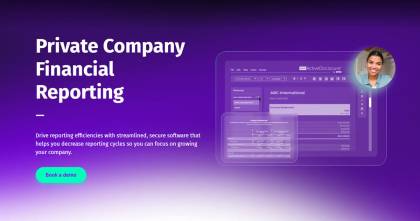In an era of heightened financial scrutiny, tracking every financial transaction is vital. You need to be able to look at all the relevant data, from the amount of the transaction to the person who processed it and the history of any edits. Having this information can help you run your business more efficiently, especially when you need to find the cause of inaccuracies or possible fraud.
Keeping an audit trail record isn’t just good business, however. It is a matter of regulatory compliance. If you want to be ready for annual reporting or your next audit, you need to build a comprehensive record. With this guide, you can discover the reasons to boost your audit logging, along with best practices and digital solutions to help you streamline the process.
What is an Audit Trail and Why Does it Matter?
In any financial component of a business, record-keeping is paramount. Modern reporting requirements call for sophisticated solutions, and not just for regulatory compliance standards. The increase in fraud and malware attacks on financial institutions highlights the importance of implementing processes and systems that can help you find problems before they become critical failures. Any financial aspect of the company could benefit from improved audit trails, but financial reports, SEC filings and internal approvals rank the highest in priority. These tasks present a higher impact to the company, requiring meticulous tracking to ensure accuracy and integrity throughout.
A comprehensive audit trail is a common requirement for financial reporting, using SEC or SOX reporting guidelines. These regulations exist to ensure that publicly traded companies provide complete and accurate records of their financial dealings and typically require annual reporting. An audit log is a key aspect of risk management for the company, as well. A detailed list of date and time stamps, along with user IDs and activity logs, can help administrators to identify potential problems or weaknesses in the record. Quick action can lead to effective solutions, minimizing guesswork or finger-pointing during the search.
Key Components of a Robust Audit Trail
For an audit trail to be comprehensive enough to meet regulatory compliance standards and provide additional value to the company, it requires certain key components. As a rule, audit logs should include user credentials, timestamps and transaction details. Within the details, organizations may also need to track information at a granular level, involving file versions, edits, approvals and changes to transactions. With this information, you can provide a complete record for your next external audit or isolate actions that create vulnerabilities and other problems.
Ideally, the logs for these records come from automated tools. Expecting workers to record these logs introduces a higher rate of human error, as well as requiring work hours for tasks that are easily handled by software. Digital tools can track this information and put it into a repository with real-time updating and greater accuracy. SEC reporting software can handle encryption as well, so the organization can prevent malicious actors from gaining access to the records to tamper with or erase them.
The Role of Audit Trails in Compliance
Audit trails are a recommendation or requirement of several types of financial statements. Public companies in the United States are required to follow guidance from the Securities and Exchange Commission (SEC) and rules set by the Sarbanes-Oxley Act (SOX) in annual reporting. In some cases, organizations must also report to the Financial Industry Regulatory Authority (FINRA). Companies operating outside the U.S. might be required to submit reports according to General Data Protection Regulation (GDPR) standards, as well. These regulatory groups require extensive audit trails to verify the accuracy of financial information.
You can expect a thorough review of the report, with results reflecting the quality of the financial information you provide. Incomplete audit trail data or suspicious entries consistent with fraud can lead to stiff fines and other penalties. Non-compliance penalties depend on the extent of the error. Knowingly submitting a report that does not meet SOX guidelines may carry a penalty of up to $5 million and prison time of up to 20 years for the executive certifying the report. Even if the error is relatively minor, businesses risk damaging their reputations or even having the company delisted from the stock exchange.
Best Practices for Maintaining Secure Audit Trails
Although the actual logging of the information may be the biggest step in achieving accurate audit trail data, there are a number of best practices you should use in keeping that information correct and secure. These include:
- Creating clear policies and procedures that the financial records team can follow
- Standardizing processes for documenting each transaction, including operational transactions
- Implementing an internal audit of financial activity to verify information, such as a financial statement tie-out
- Setting intervals for reviews of the audit log, looking for suspicious activity or incomplete financial records
- Separating duties so that the person responsible for overseeing data entry is not the only person reviewing the logs for accuracy
- Restricting edits or deletions to the log to minimize fraudulent tampering
- Requiring multiple internal auditors to review information to reduce conflicts of interest
- Testing backups to confirm that the system is storing data using failure-proof methods
- Confirming encryption to prevent unauthorized access
Creating a culture of integrity and transparency can help to build processes that prize accuracy, which can improve the ease of compliance over time.
Common Challenges & How to Overcome Them
Although many tools exist to help businesses meet the regulatory requirement of audit trail information, some organizations fail to generate accurate, comprehensive reports on time. Common challenges include:
- Data Silos: Companies may keep data separate between departments or divisions, out of a lack of integration or a sense that decentralizing data is safer. However, these data silos can increase the likelihood of errors in transmission or incomplete logs when audit trails are not generated from a centralized data repository. A centralized, cloud-based system can provide sufficient security while maintaining access to all relevant parties.
- Manual Entry Risks: Automated audit logging has a higher likelihood of accuracy, but many organizations have failed to integrate automation into their financial processes. Dependency on manual entry can introduce errors in logging or slow the process, leading to incomplete or inaccurate information when reports are due.
- Complex IT Landscapes: Changes to the company dynamic, such as a merger or expansion, call for upgrades to the systems handling audit data. A failure to effectively merge systems into an integrated platform can result in ineffective reporting and other problems.
In most cases, a digital transformation in finance and accounting can prevent these problems from affecting overall compliance.
Leveraging Technology for Smarter Audit Trails
For the modern business looking to improve the audit trail, modern solutions can streamline the process and increase accuracy. Cloud-based solutions, especially those utilizing AI and blockchain, can highlight weaknesses in the system and notify administrators of potential failures. Digital options include these and other features:
- Automated Data Collection: Automated data collection, through platforms such as DFIN’s ActiveDisclosure, can simplify the work of gathering information and generating an accurate financial statement.
- Virtual Data Rooms: As a virtual data room provider, DFIN provides a robust digital infrastructure to promote collaboration and real-time updates, while tracking edits and other transactions as part of information security.
- Real-Time Alerts: Instead of tracking down unauthorized access or edits after the fact, many digital solutions offer real-time alerts to allow administrators to prevent malicious actions.
- Analytics & Reporting: Although accurate reporting may be a key goal of creating an audit record, this information can become a gold mine for analysis, allowing companies to identify trends or anomalies.
The right solution should be easy to use and consistent between platforms, so that organizations can integrate the software seamlessly into existing financial and operations systems.
Choose DFIN to Create Effective Audit Records
Implementing a robust system for audit logging makes sense as a business that needs to be able to minimize risks and resolve problems in real time. You also need to maintain annual audit logs as part of your compliance strategy. Although an audit log takes time and effort to implement and maintain, it provides a shield against financial inaccuracies, fraud and regulatory non-compliance.
If you have yet to integrate an audit log system for your business, you could benefit from an analysis of your existing reporting structures and processes. For greater efficiency, explore DFIN’s solutions to learn more about how you can find gaps in your audit trail. Streamline financial reporting with ActiveDisclosure software and more easily organize, manage and distribute data with Venue Virtual Data Rooms.

